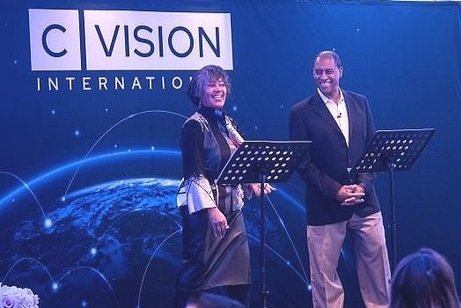Art: A Fount of Soulful Sharing
Some weeks ago, Greg and I gave a keynote presentation for a group of marketers at the C-Vision International Think Tank in New York City entitled, “Your Sound: A Key Instrument for Marketplace Success.” “Your Sound” is a Jazz Leadership Project (JLP) practice that means having an identifiable voice, style, or perspective. We were addressing Chief Marketing Officers, so from their organizational perspective, identifying and developing “Your Sound” showcases a distinctive tone, feeling, and rhythm that clients and customers instantly recognize.
At the end of the presentation, there was an opportunity to engage in a brief Q&A with the attendees. A woman took the mic and said that as soon as she heard Louis Armstrong’s voice, it brought back memories that made her “feel warm and fuzzy inside.” She then asked: what it is about jazz that over all the years, the connection remains with that “soft spot” and how can a professional develop something that resonates in a like manner so that people feel that the company makes them feel “like home”?
I loved her question. It encapsulated all that we had just shared about the intentionality of building relationships with their customers by establishing “Your Sound.”
It spoke to the experiences that artists make possible as they ask questions and seek answers to their own life queries.
It is the experience that evokes the feelings and emotions that we transform into memories of the moment.
And, as one of our musicians shared, it’s the associations and the references of his life experiences that he infuses into his music that helps others create their own story from it.
As soon as the JLP Trio started playing “Take the ‘A’ Train,” the energy shifted, and smiles broke out around the room. The universal power of the arts creates spaces for us to ruminate in the beauty, the joy, and our, at times, painfully convoluted human experience.
Artistry as Pathway to Freedom
Suzan Lori-Parks
Pulitzer Prize, Tony Award, and MacArthur Genius Grant winner Suzan Lori-Parks’ latest production, Sally & Tom is a play that asks the difficult questions and explores the relationship dynamics between Thomas Jefferson, author of the Declaration of Independence, and his slave, Sally Hemmings. Greg and I saw it at the Public Theatre in NYC this past Friday. The play is a play within a play, with each actor playing double roles—both historical and modern day. Actress Sheria Irving, playing Sally, gives a riveting monologue as she struggles with the question of love and hate for her master and the father of her seven children. Her agonizing struggle is evident in her attempt to hold both truths. Lori-Parks says that she is looking to embrace possible truths of the Jennings-Jefferson story, while offering “pathways to freedom and mytho-poetic structures that might deepen our collective understanding and compassion.” Lori-Parks’ pathway is not without challenge, but within it lies freedom.
Artistry as a Blessing
Davone Tines by Noah Morrison
Bass-baritone opera singer DaVone Tines is also clear on what his artistry affords him. In his recent interview with the New York Times, Tines said, “It’s a blessing to be a performing artist because you get an explicit place to put your feelings. It’s the blessing of having a channel.” The article also makes clear how through his journey to find himself in the world of classical music, Tines found ways to connect, using his art to address issues like racism and police brutality. Tines, currently starring in El Nino at the Metropolitan Opera, is recognized for performing with a deeply personal, vulnerable voice. Like Lori-Parks, Tines says his desire is to “pick apart the complicated, contentious existence that is knit into the American Landscape.”
For me and so many others, it’s a blessing to experience the opportunities that artistic works provide us. Attaining new or different perspectives allows us to better understand who we are in relation to what we value. Our experiences become relatable.
Art is a fount of sharing—our joy, our sorrow, our wonder—connecting us soul to soul.




